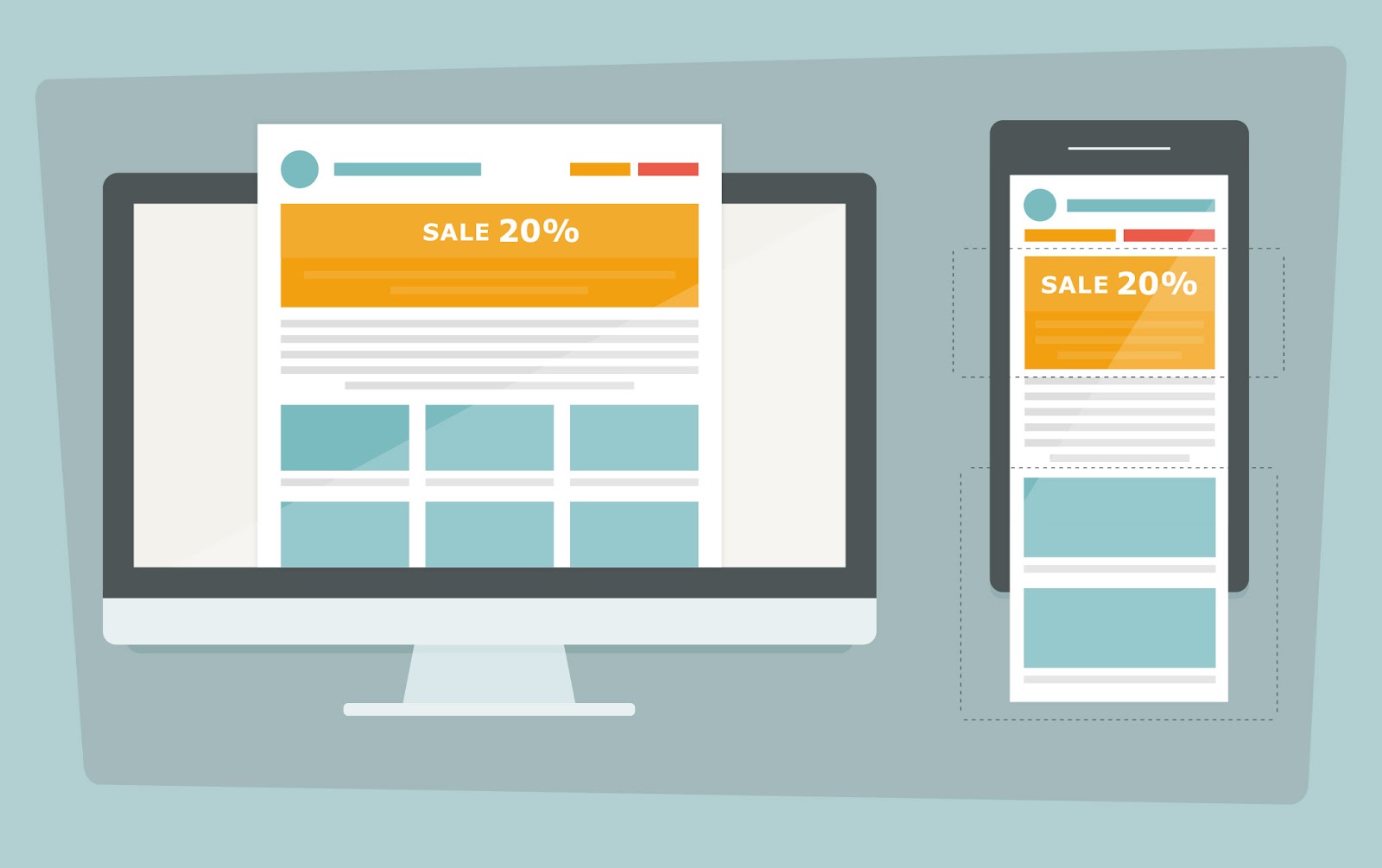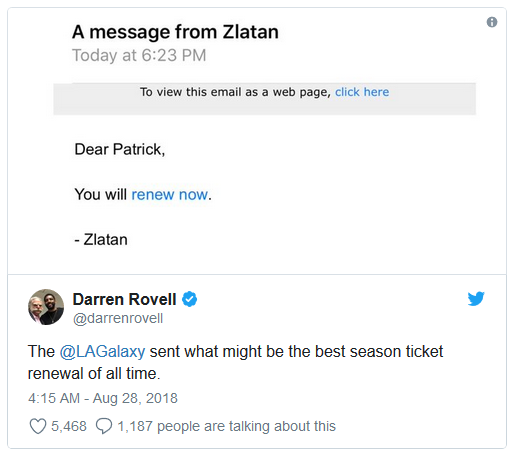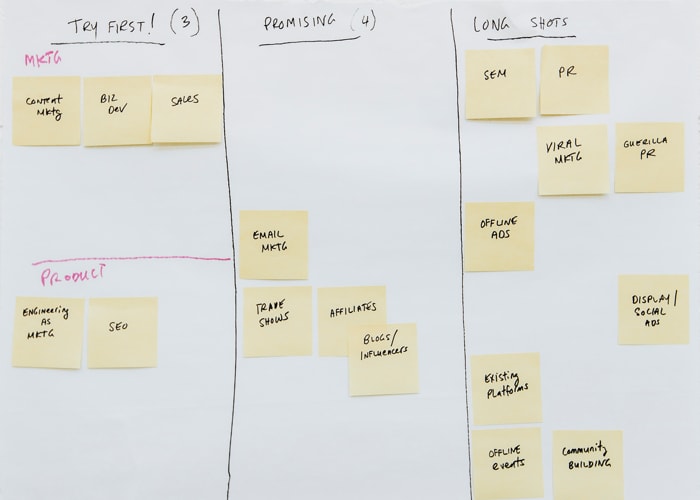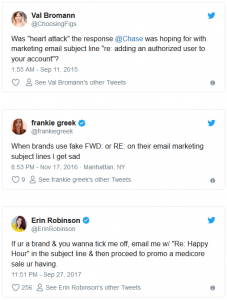Sourced from MARKETBL
Email marketing provides the most direct line of communication to your target market. Your email database is full of potential and current customers as well as possible future customers; or at least it should be, especially in light of GDPR. This database should then essentially be warm leads, providing an ever-growing pool of warm leads which should be easier to convert in in the future and provide a cost-effective source of sales as your small business grows. So the question is, what do you need to know for your business to benefit from all of the best outcomes of an effective email marketing campaign?
 Build Your Email Lists
Build Your Email Lists
The first port of call is to build and develop your email list, after all the basis of a successful email marketing campaign or strategy, are the recipients. However, it’s not enough to blindly build up the number of email addresses on your list; you need to ensure the quality also.
You can do this by segmenting your lists or splitting out into separate lists the email addresses you collect. Segmenting your lists will allow you to keep track of the sources of emails, whether they’ve come through an ebook campaign or are past customers. By segmenting these lists out, you’re able to ensure members only get emails that are targeted and relevant to them.
Above all ensure you receive Opt-in consent from all members of any lists if you’d like to avoid a potential 20 million euro fine when the EU GDPR kicks in. Seeking Opt-in, which is essentially informed consent of joining an emailing list also helps to improve the quality of your list, as your campaigns will be viewed by only those who are actively interested in your business and what you offer.
Software
Pick the software you use for your email marketing wisely as switching can be a hassle and can damage your brand consistency, as well as leading to errors such as duplication.
The best option for small businesses would be MailChimp as it offers an easy interface and has a very shallow learning curve. Of course, the main reason many small businesses use MailChimp for their email marketing is the cost. MailChimp is free for up to 2,000 subscribers and up to 12,000 emails a month.
The downside is however once you start to grow your email lists the costs can begin to jump quite rapidly; though this may not be so much of an issue for you at that point. The other aspect to consider is appearance. Many MailChimp templates can look repetitive and can be recognised as a MailChimp template, even by the casual reader. The monotonous look is something of a casualty of MailChimp’s success; so many businesses use the service that it’s now highly recognisable. Consider opting for custom HTML templates that you can have designed for your business.
Auto-Responses
When users opt-in for your email lists, they should receive an email notification. Auto-responses can help to reduce your unsubscribe rate as users have a reference point. Within the auto-response, you should detail the reason they subscribed and what they can expect. These automated emails help them to remember and reference why they signed up, and the fact that they did sign up.
Sticking to the activities you outline in this opt-in is also very important as you do not shock your audience with your emails or their regularity. This avoids situations in which recipients of your emails feel they have been misleading.
 Email Design
Email Design
Good visuals keep readers engaged with the content and message of your emails. People naturally respond more positively to well-designed pieces of content. So nailing down a quality design for your email campaign that sells your brand as reliable and well-put-together as well as making clear what’s on offer.
Think about the flow of information and the logic of the order in which data you deliver. Consider the story you’re attempting to telling with each email and the best way of doing so. The visual design has a large part to play in setting the tone of the message that is received.
Also, Make sure Calls to action are clearly discernible. Within most emails, you’ll have multiple ‘calls to action’, some of which will be softer conversions. Making this evident in the design is essential. Conversions that will offer your business the most value need highlighting the most provided this makes sense in the context of the campaign.
Email content
Providing value should be the foundation of every email campaign. Recipients need an incentive to review the email and ideally convert into a sale. You can offer value by sharing your content, providing discounts and free or exclusive services. The key here is making membership to your businesses email list seem worthwhile and desirable. This keeps recipients opening future emails and paying attention to the contents of them as a pose to unsubscribing.
The primary goal of most email marketing campaigns will be to sell your product or service, so by all means, do so, sell! Selling is to some degree expected by most users, but don’t be too forceful with this. Make it clear as to why readers need what you’re selling but don’t be repetitive. If you convey your message well enough, readers will recognise if they need what you are offering.
Timing (Frequency)
Scheduling is also crucial to email marketing. Setting out what day of the week or month you launch your email campaigns will help with regulating the frequency of them. You will be walking a fine line between staying in regular contact with your mailing list to nurture them as leads, and not saturating their inboxes, which often leads to poor feedback and unsubscriptions.
A default frequency of weekly tends to be touted to small businesses but keep in consideration how much content you currently have and your capacity. It is vital to avoid being repetitive, and at times to keep up with a weekly newsletter message and material can get reused to the point where they become monotonous and mediocre.
 A/B Testing
A/B Testing
The best way to improve your email marketing campaigns is to test them. And where conversions are at stake, testing every element of your emails to find out what works and what doesn’t can help to transform a poorly performing campaign into a successful one.
Test everything from the Subject line of your emails to the mobile responsiveness. Remember 61% of emails get viewed on mobile devices.
Try A/B testing some of these components of your emails:
- The Subject Line
- The Offer/promotion or Call-to-action
- The Layout of the email
- The Design of the mailer including the images or colours used
- The Level of personalisation. E.g. Using generics Vs First name’s.
- The Content formats; e.g. written or visual content
- The Headline of the mailer
Consistently testing all of these aspects of your email campaigns will allow you to pull together a better campaign in future; resulting in what will be your ultimate format and campaign. This feeds directly into the final essential aspect of email marketing.
Analytics and Measuring
There’s no use tinkering and testing your email marketing campaigns if you’re not gathering and measuring the analytics. These key indicators, like the number of opens or click-throughs, will help to benchmark and assess the success of each campaign. Making changes and testing needs to be based on the analytics collected and measured purely.
Do not underestimate how important it is to measure every action and change in your email marketing campaigns, these activities are numbers based at their core after all, so keeping this in mind will be the deciding factor in making your email marketing campaigns a success.
Final Thoughts
You’re now equipped with everything you need to know to run effective email marketing campaigns for your small business. Like anything in business remember to keep up to date with the latest new tools and methods to keep at the forefront. We highly recommend you review the General Data Protection Regulations to ensure you avoid any potential fines and keep your email marketing activities completely compliant.
As always, Happy Small Business Marketing!




















/cdn.vox-cdn.com/uploads/chorus_asset/file/10537109/seamless_email.jpg)
/cdn.vox-cdn.com/uploads/chorus_asset/file/10537121/ref_email.jpg)
/cdn.vox-cdn.com/uploads/chorus_asset/file/10537127/barrys_email.jpg)
/cdn.vox-cdn.com/uploads/chorus_asset/file/10537133/glossier_email.jpg)


